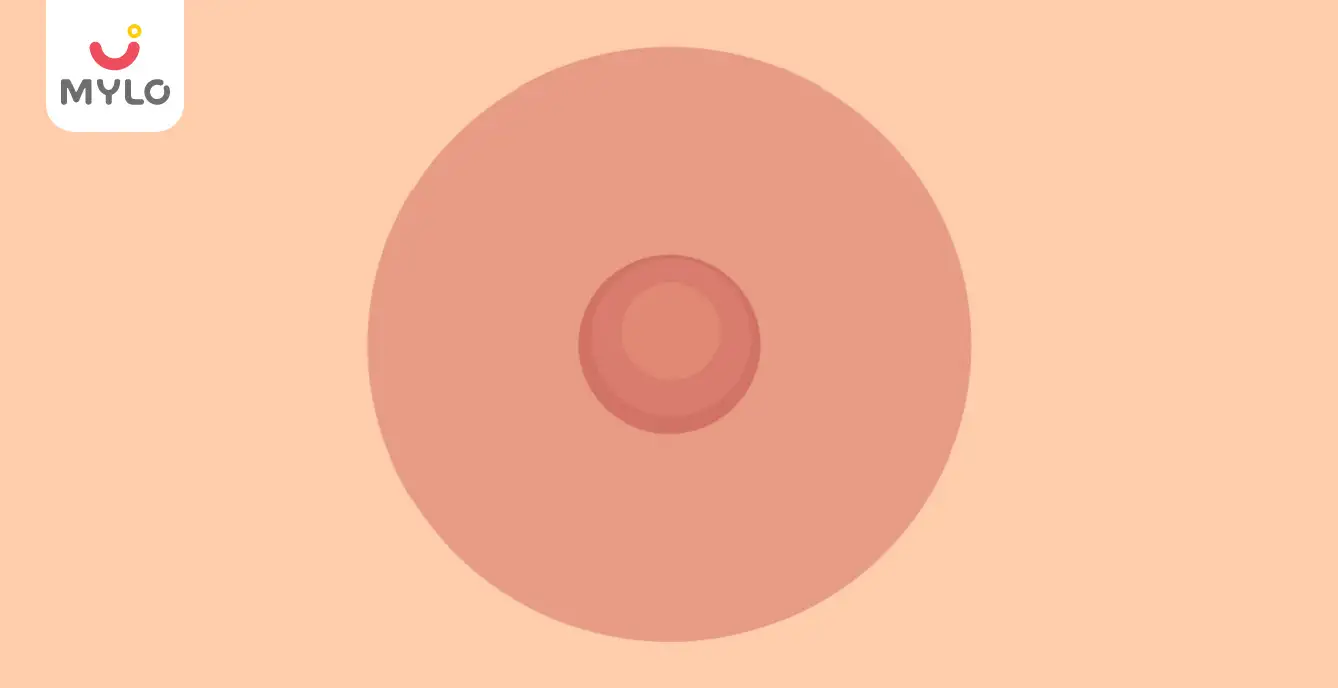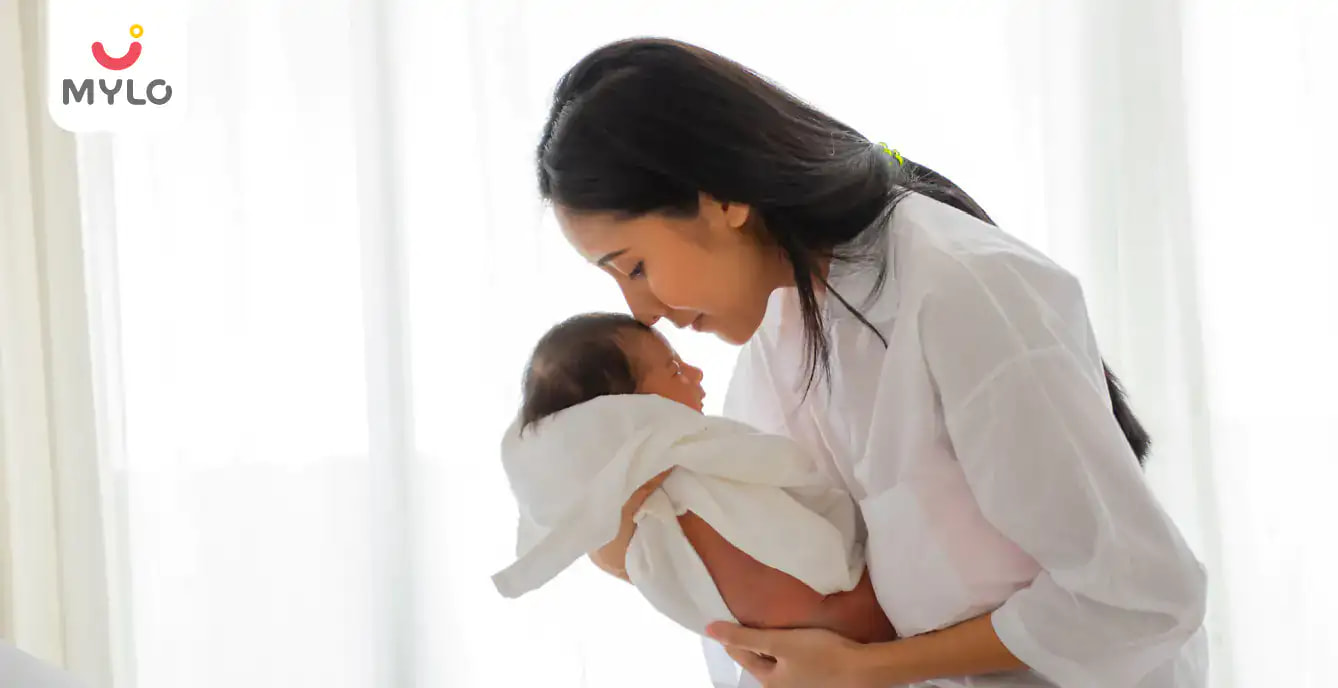Get MYLO APP
Install Mylo app Now and unlock new features
💰 Extra 20% OFF on 1st purchase
🥗 Get Diet Chart for your little one
📈 Track your baby’s growth
👩⚕️ Get daily tips

OR


Article Continues below advertisement
- Home

- Postnatal Care

- Postpartum Period (Puerperium): What are the stages?
In this Article
- Stages of postpartum period
- Acute postpartum period
- Subacute postpartum period
- Delayed postpartum period
- Sex during the postpartum period
- When is the first menstrual period after giving birth?
- Postpartum checkups
- Know more about postpartum period (FAQs)
Postnatal Care
Postpartum Period (Puerperium): What are the stages?
Updated on 3 November 2023
The postpartum period marks the beginning of the postnatal period, and this phase is also referred to as the fourth stage of labor. A woman experiences emotional as well as numerous physical changes in this period. Therefore, it is essential to know about the postpartum period meaning, its different phases, and the challenges that one faces during this period.
Stages of postpartum period
The postpartum period duration is around six weeks, during which the hormonal levels and the size of the mother's uterus return to the pre-pregnant state. The postpartum period can be divided into three different continuous phases.
Acute postpartum period
The acute or initial phase of the postpartum period involves the first six to twelve hours after childbirth. During this period, the mother is monitored by midwives or nurses to ensure no complications arise. One of the significant health risks that a woman has during this phase is postpartum bleeding.
This bleeding primarily occurs because the place where the placenta is attached to the uterine wall bleed, and as long as the uterus does not contract, doctors cannot stop this bleeding. Furthermore, one might also face complications such as amniotic fluid embolism, uterine inversion, and eclampsia.
Article continues below advertisment
Subacute postpartum period
The second phase of the postpartum period is called the subacute postpartum period, lasting two to six weeks. During this phase, a woman’s body undergoes several changes in genitourinary recovery, emotional status, hemodynamics, and metabolism. This is a slow phase, and one may experience all these changes vividly.
A woman can feel these changes easily in the form of perineal discomfort or postpartum depression. According to studies, eighty seven to ninety four percent of women reported at least one health problem during their subacute postpartum period.
Delayed postpartum period
The third and last phase of the postpartum period is called the postpartum period, which lasts six months. This is the phase where restoring the muscles and connective tissues occurs, and the body returns to the pre-pregnant state. One also experiences recovery from childbirth complications such as urinary and fecal incontinence and painful intercourse.
Furthermore, mental ailments such as PTSD also subside in this stage. Although the body gradually restores to pre-pregnancy, the genitourinary system’s changes take much longer to resolve.
Sex during the postpartum period
One might wonder, after childbirth, what is the right time to have sex? Some women experience low libido or low sexual drive during the postpartum period, a normal phenomenon. Healthcare professionals advise waiting for at least six weeks after childbirth to have sex. However, if a women feel that she is ready, they should at least consult a doctor before starting intercourse.
Low libido during the postpartum period may be due to nervousness or fear of feeling pain during intercourse. If a woman plans to have another child, then they should wait at least twelve months to recover from the subsequent pregnancy fully.
Article continues below advertisment
When is the first menstrual period after giving birth?
After childbirth, one experiences vaginal bleeding, known as lochia, which should not be confused with menstrual bleeding. The timing of the first period depends on whether a woman is breastfeeding or formula-feeding their baby.
In the case of breastfeeding, the first menstrual period may not return for up to six months and sometimes does not return until the woman has weaned their baby from breastfeeding. Whereas a woman who is formula-feeding their baby may get their first menstrual period six to eight weeks after childbirth.
Postpartum checkups
To understand the early symptoms of postpartum, one must study and understand what is postpartum period and what its stages are. Doctors advise women to go for a checkup two to six weeks after childbirth. And if someone has cesarian delivery, they must go for a checkup after two weeks. Some of the health checkups that are performed during postpartum are -
- Weight check
- Blood pressure check
- Breast, abdomen, and pelvic examination
- Blood glucose test for diabetic women
In addition to these checks, one must visit the doctor frequently for additional checkups and tests during the postpartum period.
To get more information about postpartum care and recovery, you can check Mylo Postpartum Care Plan that takes care of the new mother's needs and holistic well-being. It can help you with postpartum recovery, increased breast milk secretion, weight loss, improved gut health and constipation relief and postpartum depression.
Article continues below advertisment
Know more about postpartum period (FAQs)
1. Can a postpartum period trigger weight loss?
Ans: A woman loses weight during the postpartum period because the amniotic fluid, placenta, and other fluids leave the body, and the body returns to the pre-pregnancy state.
2. Can I start birth control before my first postpartum period?
Ans: One should avoid using hormone birth control pills during the postpartum period as it might affect the milk supply during breastfeeding; women who do not plan to breastfeed can start using birth control after three weeks of childbirth.
3. How long is the postpartum period?
Article continues below advertisment
Ans: The postpartum period lasts for six weeks after childbirth.
4. What to eat in postpartum period?
Ans: Women should eat plenty of fruits, vegetables, and whole grains during the postpartum period. They should avoid packaged and processed foods and drinks with high levels of salt and saturated fats.
5. What is the difference between puerperium & postpartum period?
Ans: There is no difference between the puerperium and the postpartum period as both mean the same thing, i.e., time after birth when physiologic changes in the women recede, and they return to the nonpregnant state.
Article continues below advertisment



Written by
Priyanka Verma
Priyanka is an experienced editor & content writer with great attention to detail. Mother to an 11-year-old, she's a ski
Read MoreGet baby's diet chart, and growth tips

Related Articles
Related Questions
Hello frnds..still no pain...doctor said head fix nhi hua hai..bt vagina me pain hai aur back pain bhi... anyone having same issues??

Kon kon c chije aisi hai jo pregnancy mei gas acidity jalan karti hain... Koi btayega plz bcz mujhe aksar khane ke baad hi samagh aata hai ki is chij se gas acidity jalan ho gyi hai. Please share your knowledge

I am 13 week pregnancy. Anyone having Storione-xt tablet. It better to have morning or night ???

Hlo to be moms....i hv a query...in my 9.5 wk i feel body joint pain like in ankle, knee, wrist, shoulder, toes....pain intensity is high...i cnt sleep....what should i do pls help....cn i cosult my doc.

Influenza and boostrix injection kisiko laga hai kya 8 month pregnancy me and q lagta hai ye plz reply me

Related Topics
RECENTLY PUBLISHED ARTICLES
our most recent articles

Diet & Nutrition
গর্ভাবস্থায় আলুবোখরা: উপকারিতা ও ঝুঁকি | Prunes During Pregnancy: Benefits & Risks in Bengali

Diet & Nutrition
গর্ভাবস্থায় হিং | ঝুঁকি, সুবিধা এবং অন্যান্য চিকিৎসা | Hing During Pregnancy | Risks, Benefits & Other Treatments in Bengali

Women Specific Issues
স্তনের উপর সাদা দাগ: লক্ষণ, কারণ এবং চিকিৎসা | White Spots on Nipple: Causes, Symptoms, and Treatments in Bengali

Diet & Nutrition
গর্ভাবস্থায় পোহা: উপকারিতা, ধরণ এবং রেসিপি | Poha During Pregnancy: Benefits, Types & Recipes in Bengali

Diet & Nutrition
গর্ভাবস্থায় মাছ: উপকারিতা এবং ঝুঁকি | Fish In Pregnancy: Benefits and Risks in Bengali

Diet & Nutrition
গর্ভাবস্থায় রেড ওয়াইন: পার্শ্ব প্রতিক্রিয়া এবং নির্দেশিকা | Red Wine During Pregnancy: Side Effects & Guidelines in Bengali
- ইনার থাই চ্যাফিং: কারণ, উপসর্গ এবং চিকিৎসা | Inner Thigh Chafing: Causes, Symptoms & Treatment in Bengali
- গর্ভাবস্থায় ব্রাউন রাইস: উপকারিতা ও সতর্কতা | Brown Rice During Pregnancy: Benefits & Precautions in Bengali
- Velamentous Cord Insertion - Precautions, Results & Safety
- Unlock the Secret to Flawless Skin: 7 Must-Have Qualities in a Face Serum
- Unlock the Secret to Radiant Skin: How Vitamin C Serum Can Transform Your Complexion
- Gender No Bar: 10 Reasons Why Everyone Needs a Body Lotion
- Unlock the Secret to Radiant Skin How to Choose the Perfect Body Lotion for Your Skin Type
- Top 10 Reasons to Apply a Body Lotion After Every Bath
- Communication in Toddlers: Milestones & Activities
- How to Improve Vocabulary for Toddlers?
- A Comprehensive Guide to Understanding Placenta Accreta
- Vulvovaginitis in Toddlers Causes, Symptoms and Treatment
- A Comprehensive Guide to Understanding Cerebral Palsy in Children
- Bitter Taste in Mouth During Pregnancy: Understanding the Causes and Remedies


AWARDS AND RECOGNITION
Mylo wins Forbes D2C Disruptor award
Mylo wins The Economic Times Promising Brands 2022
AS SEEN IN
















At Mylo, we help young parents raise happy and healthy families with our innovative new-age solutions:
- Mylo Care: Effective and science-backed personal care and wellness solutions for a joyful you.
- Mylo Baby: Science-backed, gentle and effective personal care & hygiene range for your little one.
- Mylo Community: Trusted and empathetic community of 10mn+ parents and experts.
Product Categories
baby carrier | baby soap | baby wipes | stretch marks cream | baby cream | baby shampoo | baby massage oil | baby hair oil | stretch marks oil | baby body wash | baby powder | baby lotion | diaper rash cream | newborn diapers | teether | baby kajal | baby diapers | cloth diapers |








